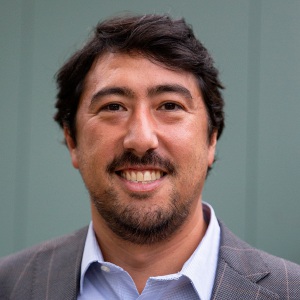Some Gulf of Maine seafood has PFAS. Your local freshwater fish may not be safe either.

FILE - Cod fill a box on a trawler April 23, 2016, off the coast of Hampton Beach, N.H. Maine fishermen bucked yearslong, industrywide trends last year and caught more fish in a development regulators said shows the impact of COVID-19 relief funds. (AP Photo/Robert F. Bukaty, File) Robert F. Bukaty/AP file photo
| Published: 08-28-2024 6:31 PM |
Some seafood purchased at a Portsmouth seafood market in May 2022 met an unusual fate.
Instead of getting fried up, three filets each of haddock, salmon, tuna, and cod, three lobster tails, and some shrimp and scallops were transported by researchers to Dartmouth College in Hanover and frozen at negative 20 degrees Celsius. Then, they were tested for PFAS.
The researchers — spanning institutions across the state and the Northeast — found in a study published this spring that the Gulf of Maine seafood had levels of PFAS that could pose health risks to residents considering how much of the protein is consumed in New Hampshire. They observed the highest PFAS concentrations in shrimp and lobster.
The diet staple is just one of many ways that per- and polyfluoroalkyl substances — the “forever chemicals” better known as PFAS – end up in humans. Almost all Americans have measurable amounts of the synthetic chemicals, of which there are thousands of varieties, in their blood. Even the state’s youngest residents suffer from exposure.
Contamination can come from emissions, such as those from Pease Air Force Base on the Seacoast or Saint-Gobain Performance Plastics in Merrimack. It can come from everyday products, such as waterproof mascara or food packaging. In landfills, PFAS can be found in the leachate, or “trash juice,” created when water mixes with waste, which sometimes ends up in the environment.
And, in a state with a small coastline but plenty of seafood, it can be in the food you buy at the store, the recent study found. The researchers suggest more could be done from a policy perspective to safeguard the public from this type of exposure. PFAS are linked to high cholesterol, some types of cancers, reproductive and fetal development issues, and other serious health problems.
“There’s lots of good healthy stuff in seafood — lean protein, omega fatty acids,” said Megan Romano, a Dartmouth researcher involved in the study. “But then there’s also always this concern about environmental contaminants being present in the seafood as well.”
Those contaminants are especially relevant in a state where most residents eat seafood. The researchers found, in a 2021 survey of 1,829 New Hampshire residents, that 95% of adult respondents ate seafood in the past year, and almost all of those people had eaten it within the past month. About half of children had also eaten seafood in the past year.
Article continues after...
Yesterday's Most Read Articles
 ‘A bit Kafkaesque’: Federal judge spars with government lawyer over status of Dartmouth international student
‘A bit Kafkaesque’: Federal judge spars with government lawyer over status of Dartmouth international student
 NH 21-year-old dies amid the worst flu season since 2009
NH 21-year-old dies amid the worst flu season since 2009
 Hundreds of alumni sign letter urging Beilock, Dartmouth to make a stand for academic freedom
Hundreds of alumni sign letter urging Beilock, Dartmouth to make a stand for academic freedom
 After more than 45 years, Upper Valley guitar shop closes
After more than 45 years, Upper Valley guitar shop closes
 On the trail: Gov. Ayotte says she delivered on her promises in her 100 days in office. Not everyone agrees
On the trail: Gov. Ayotte says she delivered on her promises in her 100 days in office. Not everyone agrees
 Claremont City Council votes unanimously to fire city manager
Claremont City Council votes unanimously to fire city manager
“Commercially-available seafood,” researchers wrote, “has received less scrutiny for potential PFAS exposure risk than self-harvested seafood, the latter of which has been the subject of several individual state fish consumption advisories.”
That includes New Hampshire, where the Department of Environmental Services in 2021 offered guidelines for a number of water bodies and species. Other contaminants like mercury, dioxins, and polychlorinated biphenyls, or PCBs, were also included.
Even small amounts of mercury can affect brain development, and PCBs and dioxins — like PFAS, chemicals humans have made that don’t break down easily — can cause cancer and affect the “immune, reproductive, nervous and endocrine systems,” DES said. Pregnant and nursing women and children up to age 6 are especially vulnerable.
For some species and waterbodies, DES recommended high- and low-risk groups limit consumption depending on age, and for others, it said to not eat the fish at all. In five water bodies in southern New Hampshire, the state identified a type of PFAS called PFOS, or perfluorooctane sulfonic acid. It lays out the following recommendations:
■At Beaver Lake in Derry, for large and smallmouth bass, it recommends high-risk groups — pregnant women and children 6 and under — limit intake to one meal per month. A meal for young children is 4 ounces; for adults and children over 6, it’s 8 ounces. Low-risk groups are recommended to eat no more than three meals of this fish per month.
■At Canobie Lake in Salem, high-risk groups should eat no more than one meal of any freshwater fish in a month, and low-risk groups no more than three. For Cobbetts Pond in Windham, the limit for large and smallmouth bass is one meal per month for high-risk groups and two for low-risk consumers.
■For some areas, the guidelines are stricter. DES recommends that children under 7 not eat any freshwater fish from Horseshoe Pond in Merrimack. For “women of childbearing age” and the low-risk group, it recommends a limit of a meal per month. And at Robinson Pond in Hudson, children under 7 should not eat any freshwater fish, DES said. “Women of childbearing age” should have only one meal a month, and others can have two.
The DES guidelines can be read in full here. The department cautions that there may be other contaminants in the environment that have not been analyzed or included in the guidelines.
Celia Chen, another Dartmouth researcher who worked on the seafood study, said she and others are working on research involving these five water bodies that are known to have PFAS pollution. They want to understand what the food webs look like for PFAS in these waters.
“It’s not just a human health problem,” she said. “It’s a wildlife problem, too.” She noted that the state has found lakes where loon eggs have high PFAS concentrations.
Another avenue for future research is learning more about the toxicity of different types of PFAS. About four or five varieties of the chemical class have had “a lot of toxicity work,” Chen said, but many others have had none.
The effect of the man-made chemicals on humans and other creatures is an unfortunate cycle, she said.
“I guess I think it’s just like so many things that we do as humans, and it comes back to bite us,” Chen said. “I think that we as humans, as the public, really, we need to be more aware of what we are putting out into the environment.”






 Art Notes: Two Upper Valley events to feature video game soundtracks
Art Notes: Two Upper Valley events to feature video game soundtracks Sandra Oh to speak at Dartmouth graduation
Sandra Oh to speak at Dartmouth graduation Roman Catholics mourn Pope Francis
Roman Catholics mourn Pope Francis A timeline of events in the rebuilding of Lebanon’s Baptist church
A timeline of events in the rebuilding of Lebanon’s Baptist church
